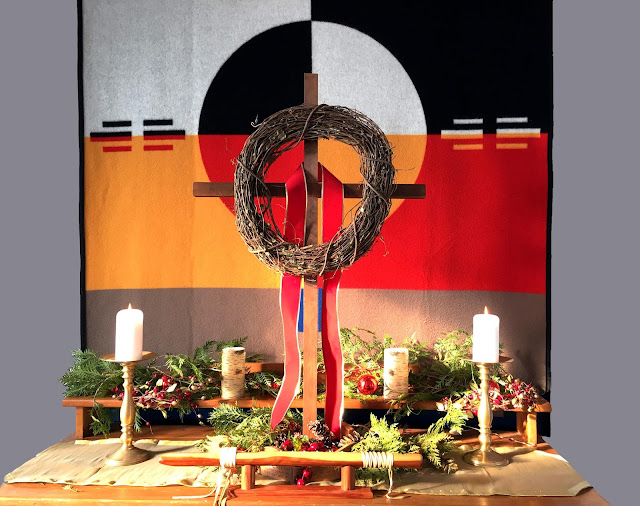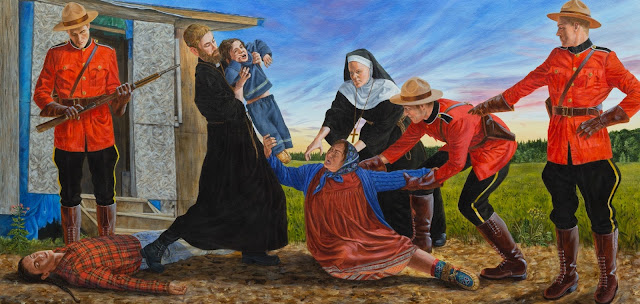It
is still Native American Heritage Month, so it is appropriate for us to
turn to the seasonal music of Native American and First
Nations peoples. Many, of course, are
Christian—Roman Catholic from lands claimed by the French
and Spanish as well as converts from U.S. missionaries
like the Salish and Kootenai Tribes (Flat Heads) in western Montana; Protestants like the Lenape (Delaware)
converted by the Moravians and others and many Cherokee and
related tribes originating in the South East; pockets converted by other denominations during
the Reservation Era; some Russian
Orthodox in Alaska and Congregationalists in Hawaii.
Native
singers, flutists, drum circles, and original composers
have recorded a wide selection of adapted carols and holiday
songs as well as new material in pop, folk, and country
western styles.
But
many aboriginal people reject Christianity as an alien and
hostile religion of conquerors and settler colonists. In recent years the move away from
Christianity has been accelerated by the cultural renaissance fostered
by American Indian movements of the 1960s and ‘70s and
more recently by rage over the forced separation of families and
brutal boarding schools run by churches in Canada and the U.S.
resulting in wide-spread abuse, neglect, and sexual
exploitation.
Some
have tried to synthesize Christian and traditional worship, most
notably the Native American Church which uses psychedelic peyote as
a sacrament. It is now the most widespread
indigenous organized religion among Native Americans in the U.S., Canada,
and Mexico with an estimated 300,000 adherents.
Others,
however, have turned increasingly to traditional tribal rituals, mythologies,
and customs often having to resurrect them from the lore of
elders and reviving nearly lost languages. Some like the Hopi, Zuni, and Navaho
of the American Southwest were powerful enough to maintain the
religion and culture.
Although
Anglo New Agers have tried to promote Native American Spirituality
as a homogeneous and touchy-feely ecological mysticism, the many nations
and tribes had diverse rituals and belief systems, each
due respect and honor.
Many
traditions from the Woodland tribes of the Northeast and Great
Lakes to the high plains horse cultures and the distinct worship of Pacific
Northwest and Alaskan peoples had their own winter songs which
acknowledged time of darkness, cold, and often starvation
while thanking their spirit guides, for support and guidance
and looking forward to a time of rebirth.
Today
we sample a Winter Song of the Northern Cheyenne chanted by
a drum circle over an organ drone.





No comments:
Post a Comment